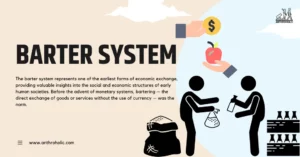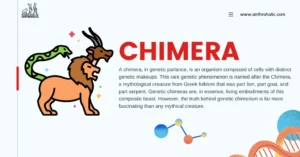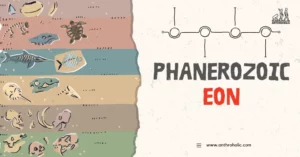AI Answer Evaluation Platform Live Now. Try Free Answer Evaluation Now
Proterozoic Eon
The Proterozoic Eon, extending from 2.5 billion to 541 million years ago, occupies a significant part of Earth’s history. This Eon marks the period between the Archean Eon, known for the establishment of life, and the Phanerozoic Eon, characterized by complex life. The Proterozoic Eon saw the evolution of Earth’s atmosphere, oceans, continents, and life forms from simple to complex multicellular organisms.

Proterozoic Eon: A Timeline
The Proterozoic Eon is divided into three geologic time periods:
- Paleoproterozoic Era (2.5 to 1.6 billion years ago)
- Mesoproterozoic Era (1.6 to 1.0 billion years ago)
- Neoproterozoic Era (1.0 billion to 541 million years ago)
| Era | Time Period |
|---|---|
| Paleoproterozoic | 2.5 to 1.6 billion years ago |
| Mesoproterozoic | 1.6 to 1.0 billion years ago |
| Neoproterozoic | 1.0 billion to 541 million years ago |
The Paleoproterozoic Era: Oxygen Revolution
The Paleoproterozoic Era, beginning 2.5 billion years ago, was a transformative period. This era saw the advent of oxygenic photosynthesis, with cyanobacteria playing a pivotal role in oxygenating Earth’s atmosphere, an event known as the Great Oxidation Event (GOE).
Notable Events of Paleoproterozoic Era:
- Great Oxidation Event (GOE): Occurred around 2.4 to 2.0 billion years ago, leading to a dramatic increase in atmospheric oxygen levels. This led to the development of an ozone layer that protected life from harmful UV radiation, paving the way for life to evolve on land.
- Supercontinent Formation: The first-known supercontinent, Columbia (also known as Nuna), started to form around 2.0 billion years ago, eventually reaching completion by 1.8 billion years ago.
The Mesoproterozoic Era: Stable Conditions and Sexual Reproduction
During the Mesoproterozoic Era, Earth’s continents stabilized, and Earth’s magnetic field strengthened. This era is significant for the inception of sexual reproduction, a critical factor in enhancing biological diversity.
Notable Events of Mesoproterozoic Era:
- Continental Growth: The supercontinent Columbia broke apart, leading to an era of considerable continental growth.
- Emergence of Sexual Reproduction: The Mesoproterozoic witnessed the emergence of sexually reproducing eukaryotic organisms, drastically increasing the rate of evolution.
The Neoproterozoic Era: The Rise of Multicellular Life
The Neoproterozoic Era was characterized by drastic climatic changes, including the Snowball Earth theory, suggesting that Earth was entirely frozen. The end of this era saw the emergence of the first multicellular life forms, setting the stage for the Cambrian explosion in the following Phanerozoic Eon.
Notable Events of Neoproterozoic Era:
- Snowball Earth: Intense glacial periods are theorized to have occurred during the Neoproterozoic era, potentially covering the entire planet in ice.
- First Multicellular Life: The first evidence of multicellular life appears towards the end of this era, with the appearance of soft-bodied organisms (Ediacaran fauna).
Geological and Tectonic Developments
The Proterozoic Eon played a significant role in shaping the Earth’s crust and establishing its tectonic activities.
Continental Drift and Supercontinent Cycles
The Proterozoic witnessed the formation and break-up of supercontinents – large landmasses consisting of multiple continental cores. The first recognized supercontinent, Columbia, formed around 1.8 billion years ago. This was followed by the formation of Rodinia around 1.3 billion years ago and its subsequent breakup around 750 million years ago.
Mineral and Metallic Deposits
It is during the Proterozoic Eon that the Earth experienced a boom in its mineral and metal wealth. The tectonic activities, accompanied by periods of glaciation, led to the formation of significant deposits of iron, copper, gold, and other minerals.
Biological Evolution
The Proterozoic Eon saw the transformation of life from simple to complex forms.
The Rise of Eukaryotes
Eukaryotic cells, which are more complex than their prokaryotic counterparts, first appeared in the Proterozoic Eon. These cells have a nucleus and other specialized structures, allowing them to perform more advanced functions.
Emergence of Multicellular Life
Towards the end of the Proterozoic, the first multicellular organisms emerged. This was a significant development that paved the way for the rise of complex life in the subsequent Phanerozoic Eon.
Climatic Conditions
The Proterozoic Eon experienced dramatic climatic shifts that played a crucial role in shaping life and the physical environment.
Banded Iron Formations
The increase in atmospheric oxygen during the Great Oxidation Event led to the precipitation of iron in oceans, forming distinct layers of iron-rich sedimentary rocks known as Banded Iron Formations (BIFs). These formations are significant indicators of the oxygenation of the Earth’s atmosphere.
Snowball Earth
The Neoproterozoic Era experienced severe glaciations, often referred to as the “Snowball Earth” events. These events had profound impacts on the Earth’s climate and life.
Conclusion
The Proterozoic Eon marked significant changes in Earth’s atmosphere, geology, and biological life. The oxygenation of the atmosphere set the stage for the evolution of complex life. The Earth’s crust stabilized, setting the foundation for future continental drift and plate tectonics. The evolution of sexual reproduction and the first multicellular organisms signaled the dawn of complex life. Understanding this era provides us insights into our planet’s history and life’s evolutionary journey.
References
- Holland, H.D., 2006. The oxygenation of the atmosphere and oceans. Philosophical Transactions of the Royal Society B: Biological Sciences, 361(1470), pp.903-915.
- Knoll, A.H., Javaux, E.J., Hewitt, D. and Cohen, P., 2006. Eukaryotic organisms in Proterozoic oceans. Philosophical Transactions of the Royal Society B: Biological Sciences, 361(1470), pp.1023-1038.
- Hoffman, P.F. and Schrag, D.P., 2002. The snowball Earth hypothesis: testing the limits of global change. Terra Nova, 14(3), pp.129-155.
- Xiao, S. and Laflamme, M., 2009. On the eve of animal radiation: phylogeny, ecology and evolution of the Ediacara biota. Trends in ecology & evolution, 24(1), pp.31-40.
- Rogers, J.J. and Santosh, M., 2002. Configuration of Columbia, a Mesoproterozoic supercontinent. Gondwana Research, 5(1), pp.5-22.
- Li, Z.X., Bogdanova, S.V., Collins, A.S., Davidson, A., De Waele, B., Ernst, R.E., Fitzsimons, I.C., Fuck, R.A., Gladkochub, D.P., Jacobs, J. and Karlstrom, K.E., 2008. Assembly, configuration, and break-up history of Rodinia: a synthesis. Precambrian Research, 160(1-2), pp.179-210.
- Bekker, A., Holland, H.D., Wang, P.L., Rumble III, D., Stein, H.J., Hannah, J.L., Coetzee, L.L. and Beukes, N.J., 2004. Dating the rise of atmospheric oxygen. Nature, 427(6970), pp.117-120.
- Hoffman, P.F., Kaufman, A.J., Halverson, G.P. and Schrag, D.P., 1998. A Neoproterozoic snowball earth. Science, 281(5381), pp.1342-1346.




